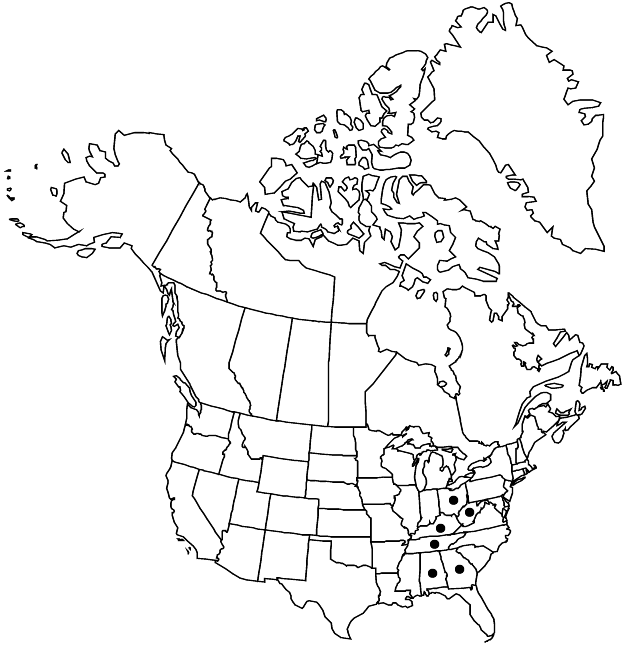Silene rotundifolia
Gen. N. Amer. Pl. 1: 288. 1818.
Plants perennial; taproot stout, fleshy; caudex branched. Stems several, straggling to erect, freely branched, 2–7 cm, pilose and glandular, sparsely so proximally. Leaves: basal leaves withered at time of flowering, distal sessile, proximal petiolate, largest on mid to distal stem; blade subrotund to broadly ovate-lanceolate, 3–10 cm × 20–70 mm, base cuneate into petiole, apex short-acuminate, sparsely short-pilose. Inflorescences cymose, open, few-flowered, leafy, bracteate; bracts resembling distal leaves. Pedicels 1–3(–4) cm, viscid, with long septate-glandular hairs. Flowers: calyx indistinctly veined, tubular, broadened distally, constricted towards base around carpophore, ± umbilicate, 20–25 × 5–8 mm, herbaceous, glandular-pilose, lobes triangular, 3–4 mm, margins narrow, membranous, ciliate; corolla scarlet, clawed, claw equaling calyx, limb deeply 2-lobed, 10–15 mm, lobes lanceolate, sometimes with 2 smaller lateral teeth, ciliate, appendages saccate, 1–1.5 mm, with clear area abaxially; stamens shortly exserted; styles 3, shortly exserted. Capsules narrowly ellipsoid, not distending calyx, included within it, opening by 6 teeth; carpophore 6–8 mm. Seeds gray, broadly reniform, plump, ca. 1 mm, shallowly papillate. 2n = 48.
Phenology: Flowering late spring–summer.
Habitat: Woodlands, partially shaded cliffs and bluffs
Elevation: 200-600 m
Distribution

Ala., Ga., Ky., Ohio, Tenn., W.Va.
Discussion
Silene rotundifolia is clearly related to S. laciniata but is a well-marked species of the deciduous forest region.
Selected References
None.